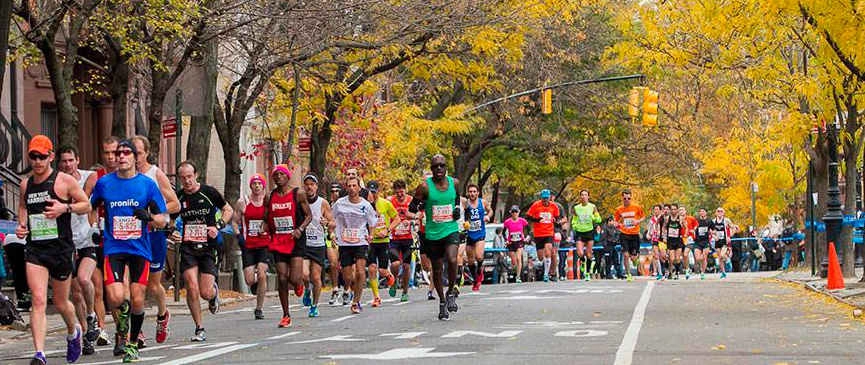Main content
The New York City Marathon Prince of Asturias Award for Sports 2014

The New York City Marathon is the most popular race of its kind (42.195 kilometres) held annually in the world. It is traditionally held on the first Sunday in November. It was founded in 1970 by Fred Lebow (1932-1994) and organized by the New York Road Runners, the club he was president of. Only 127 runners competed in the first race, paying a registration fee of $1. Only 55 competitors crossed the finish line after completing a circuit that consisted of several loops around the Park Drive of Central Park, on the island of Manhattan. Six years later, Lebow decided to redesign the course so that it traversed all five boroughs of the city, from Staten Island to Manhattan, through Brooklyn, Queens and the Bronx. He managed to raise participation to 2,090 athletes, including Olympic Marathon champion Frank Shorter, and to catch the attention of the media and residents, who lined the entire route to cheer on the runners. Since then, the New York Marathon –integrated in the World Marathon Major along with the Boston, Chicago, Tokyo, Berlin and London Marathons– has grown steadily, becoming an athletics event of international scope in which more than 50,000 participants, including professionals and amateurs, currently cross the finish line.
With its course traversing the entire city, the New York City Marathon became an event which began to appeal to some of the top runners in the world at this distance due to bringing together sport, civic spirit and media coverage. In 1978, more than 9,000 runners competed in the race for the first time; a race in which the Norwegian long distance runner Grete Waitz set a new course record for women by completing the distance in 2 hours 32 minutes and 30 seconds. Waitz is also is the athlete to have won this race on the most occasions; nine times in all. In the 90s, African athletes began to come to the front and, in 1994, Kenyan Tegla Loroupe demonstrated with her first victory in the women’s category that African women runners were on the same level as men. This opened the gates for women to be invited to participate in other international long distance races. In 2000, the organization included an official wheelchair division, which over time has also become the most competitive race in the international arena at this distance and which also includes athletes using handcycles and those with other types of disabilities.
The growth of the New York City Marathon has led to popular participation currently being chosen via a lottery system among those enrolled. In 2013, more than 50,000 runners completed the race, making this the largest marathon anywhere in the world. The holding of the race is also accompanied by a week of events and exhibitions for runners, their relatives and those accompanying them. To achieve all this, the organization mobilizes more than 9,000 volunteers, who work during the activities leading up to the marathon and on the day of the race itself, standing along a course lined by more than two million spectators. The only cancellation in the history of New York City Marathon took place in 2012, following Hurricane Sandy, although thousands of people gathered in Central Park to run, thus reinforcing the symbolism of this test.
End of main content
